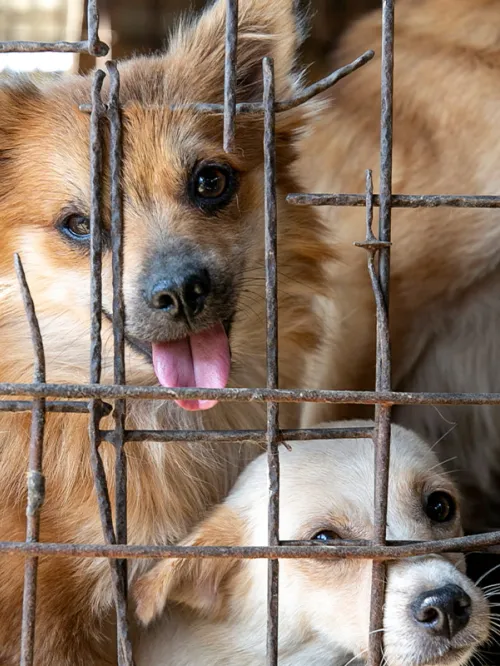
Jean Chung/Humane World for Animals

Jean Chung / Humane World for Animals
Ending the dog and cat meat trade
We believe that dogs and cats shouldn't suffer and die for the meat trade. Help us end this cruel and unnecessary practice.
Humane World for Animals works in five Asian countries that drive the dog and cat meat trades: South Korea, Indonesia, China, Viet Nam and India.
are killed for human consumption each year in Asia
are killed each year for human consumption across Asia
can be crammed onto a single trader’s truck
We’re making progress ending the dog and cat meat trade in Asia by reducing demand, tightening regulations, and rescuing animals whose stories drive change. Read about our global strategy and explore our FAQs.
Ask national leaders and other decision-makers to put an end to the trade in dog and cat meat across Asia.
DALIAN, China―A new public opinion survey in the city of Dalian, in northern China, reveals strong public support for companion animal protection there. The vast majority of citizens surveyed support
JAKARTA―The Dog Meat Free Indonesia coalition welcomes the decision of the Indonesian House of Representatives (known as the DPR RI) to include the Animal Protection and Welfare Bill in the 2026
KUPANG, NTT, Indonesia― Government officials, veterinarians, NGOs, academics and community representatives from Nusa Tenggara Timur (NTT) in southern Indonesia gathered in the provincial capital
Start saving lives by making a one-time gift today. You can also help animals all year long with a monthly contribution.
Meredith Lee/Humane World for Animals